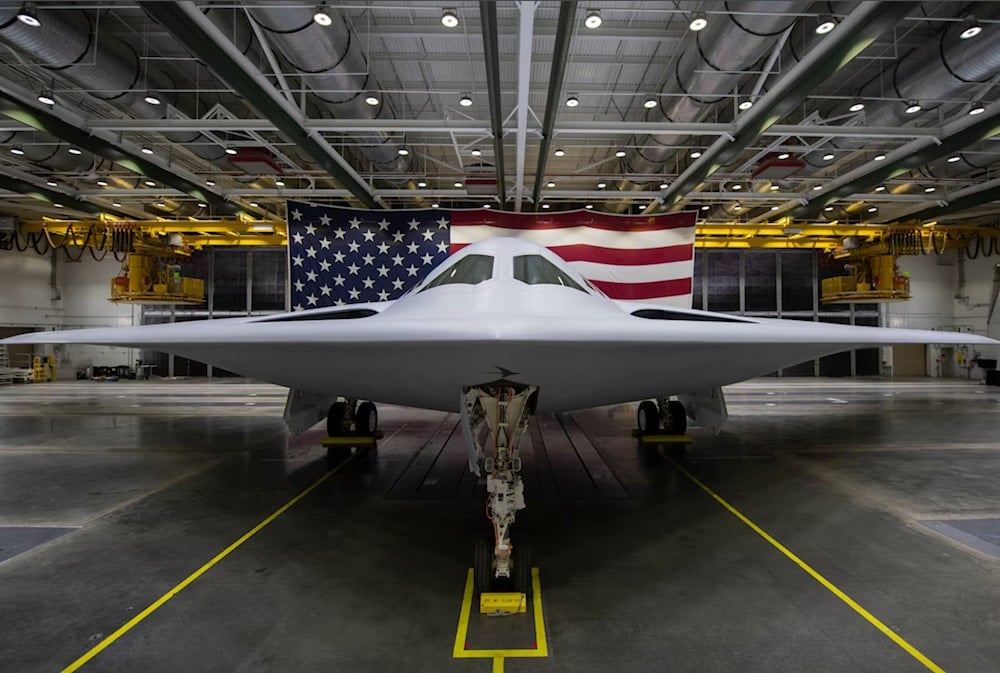US Air Force to expand manned bomber force with B-21 Raider
The Air Force is considering deploying a fleet of 140 to 175 B-21 bombers.
-

The B-21 Raider was unveiled to the public at a ceremony Dec. 2, 2022, in Palmdale, Calif. (US Air Force photo)
US Air Force Deputy Chief of Staff for Strategic Deterrence and Nuclear Integration, General Andrew Gebara, announced on Monday that the US Air Force will significantly bolster the depleted manned bomber component of its strategic nuclear Triad—comprising the land, undersea, and airbase legs of its nuclear deterrent—upon the deployment of the B-21 aircraft.
"We are shifting from 20 low observable [Stealth-capable] bombers to far larger numbers [with the B-21 program]," Gebara told a Mitchell Aerospace Institute podcast. "The B-21 is succeeding in its flight tests but it still isn't there yet. We still have a lot of work to do."
Gebara stated that the Air Force is considering deploying a fleet of 140 to 175 B-21 bombers.
The U.S. Air Force leads in strategic bomber technology with advanced aircraft like the B-1B, B-2, and B-21, highlighting aerospace advancements and strategic planning shifts. pic.twitter.com/jlaz9lRENV
— Interesting Engineering (@IntEngineering) May 17, 2024
The Northrop Grumman B-21 Raider is being developed as a long-range, stealth intercontinental strategic bomber capable of delivering both conventional and thermonuclear weapons.
It was initially developed in response to alleged threats from China, which the US claimed to be "the most consequential and systemic challenge to US national security and the free and open international system."
"With the B-21 the United States Air Force will deter and defeat threats anywhere in the world," Kathy Warden, Chair, CEO, and President of the aerospace and defense technology company Northrop Grumman said at the time, adding: "The B-21 raider changes everything: reaffirming peace through deterrence, advancing technology, and ushering in a new paradigm in aircraft design, development, and manufacturing."
It is intended to replace the Rockwell B-1 Lancer and Northrop Grumman B-2 Spirit stealth aircraft by 2040, and potentially the Boeing B-52 thereafter.
The B-21, which had its maiden flight in November 2023, is widely considered the US equivalent of the Russian Tupolev PAK DA and is expected to achieve subsonic flight at Mach 0.8, according to published reports.

 2 Min Read
2 Min Read










